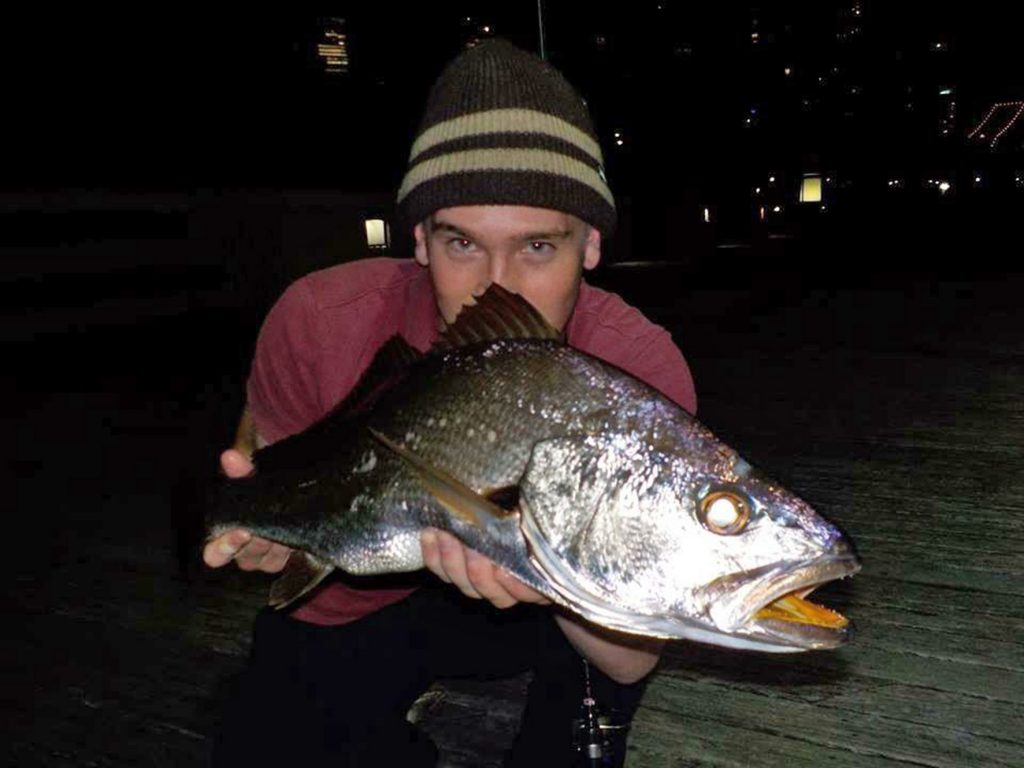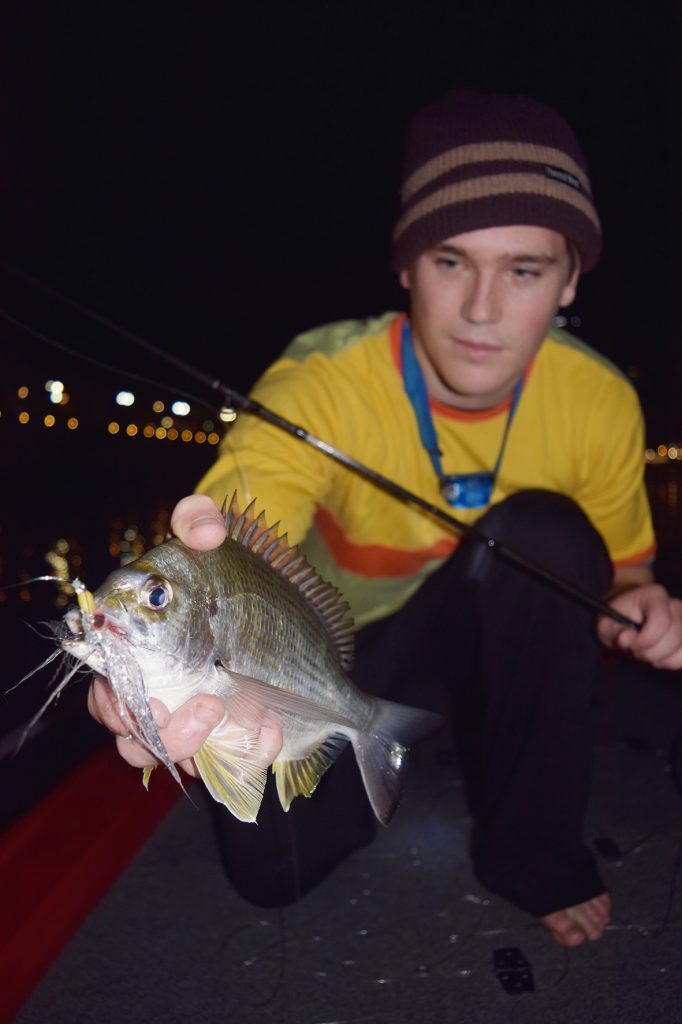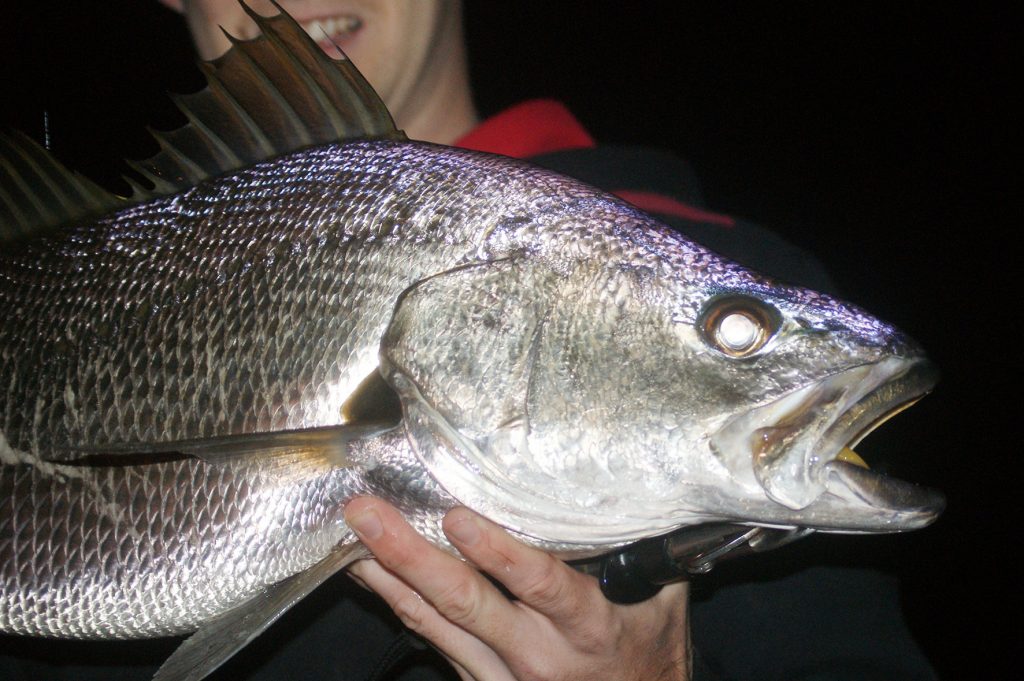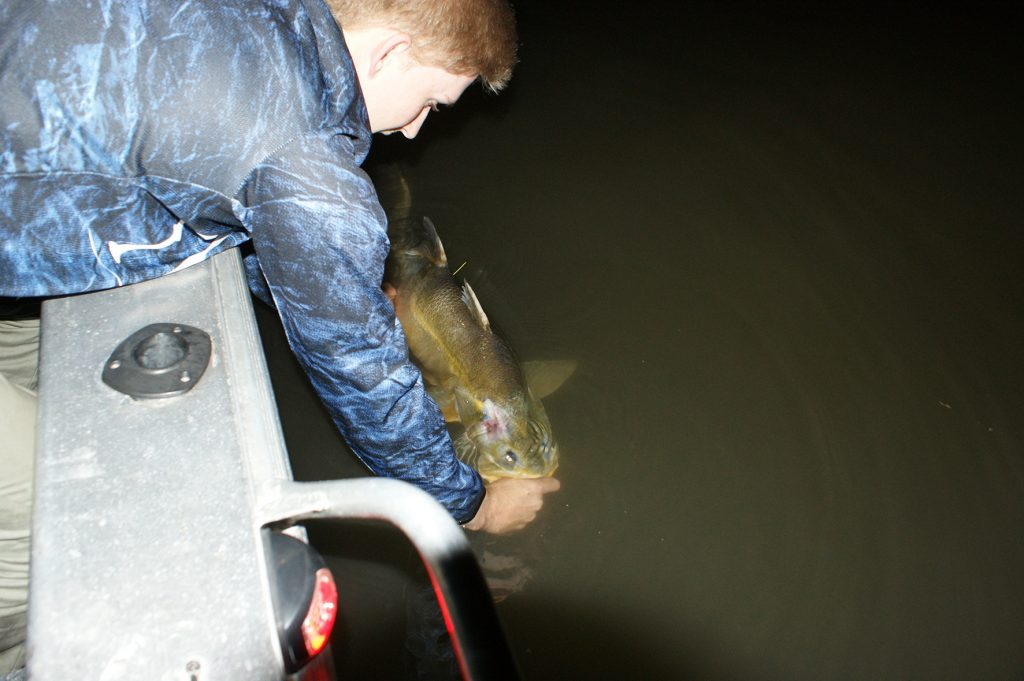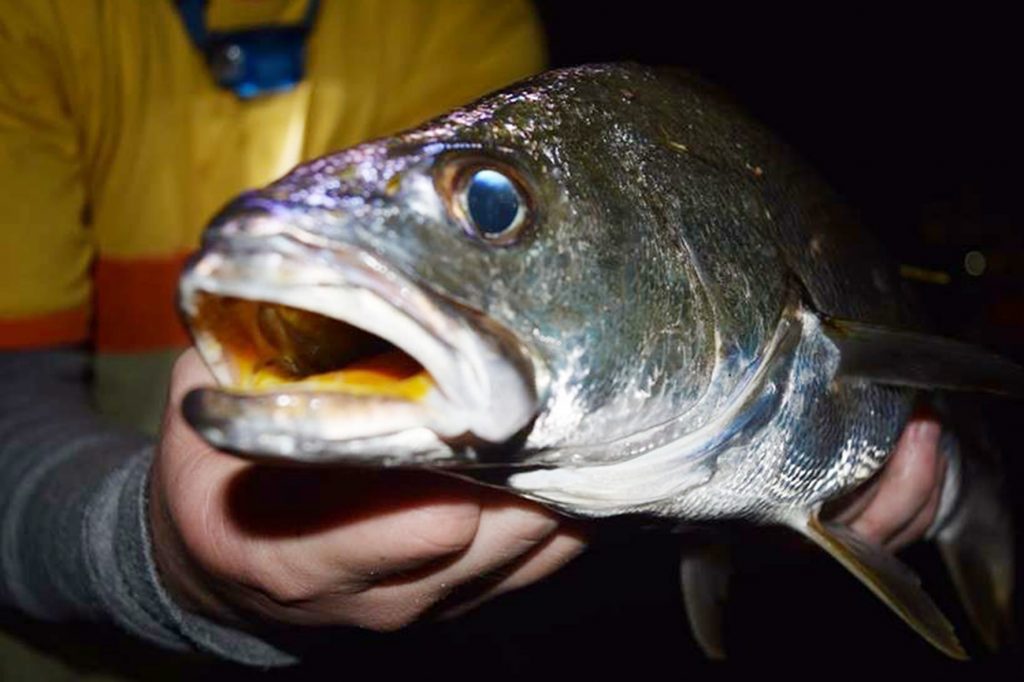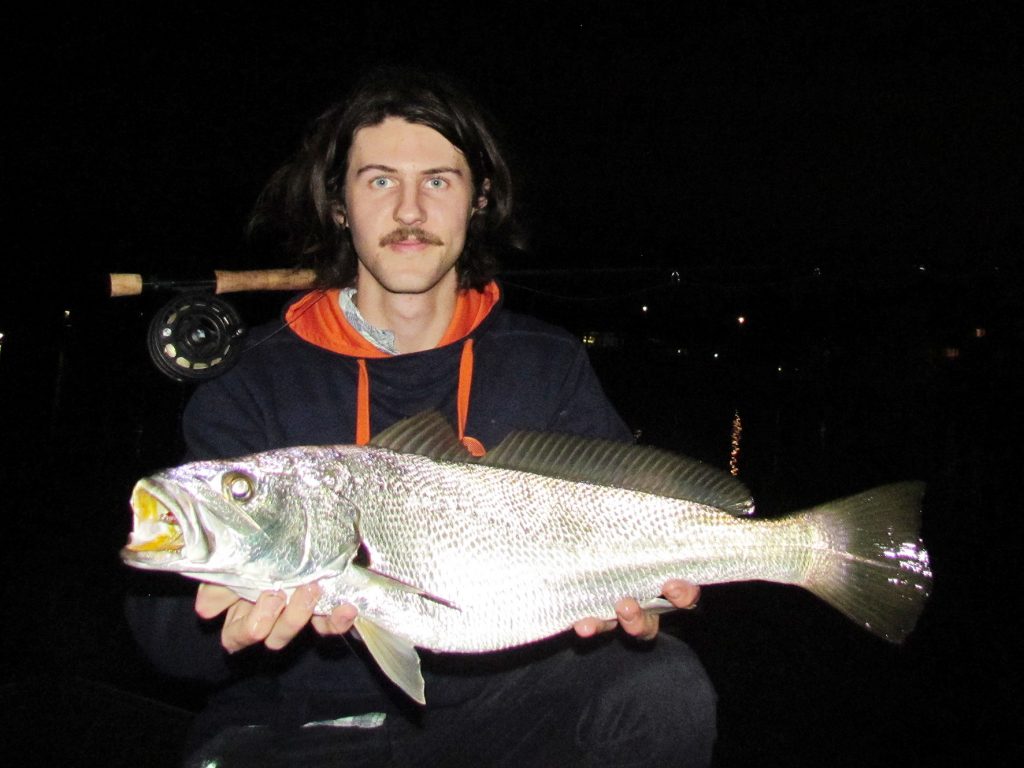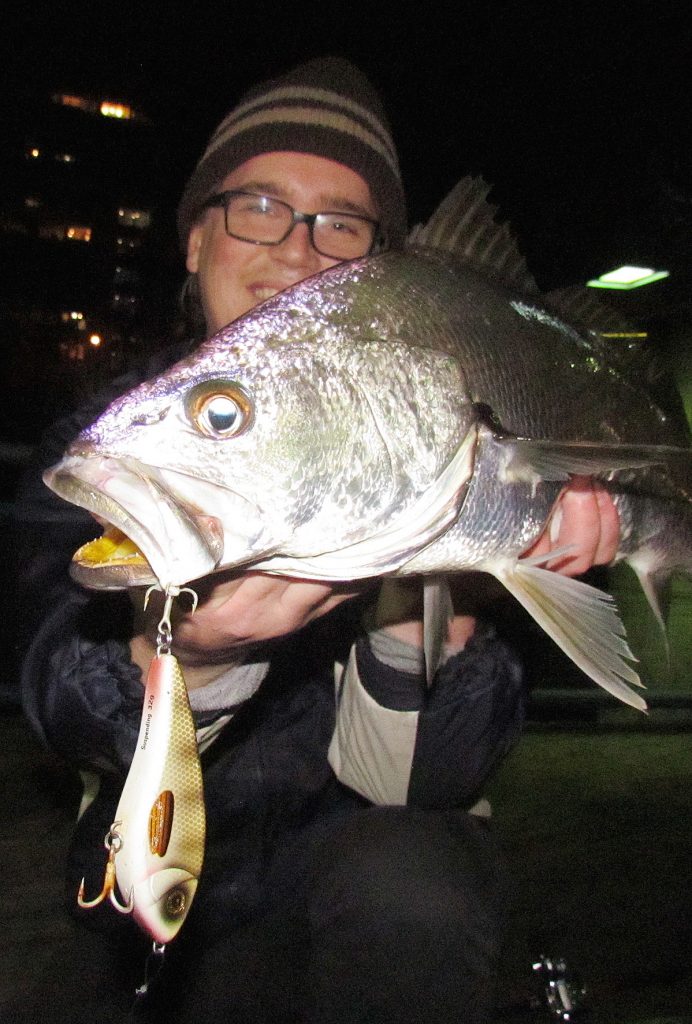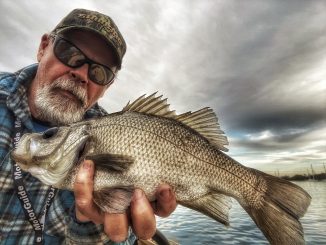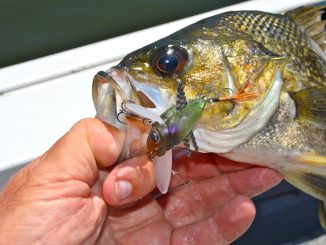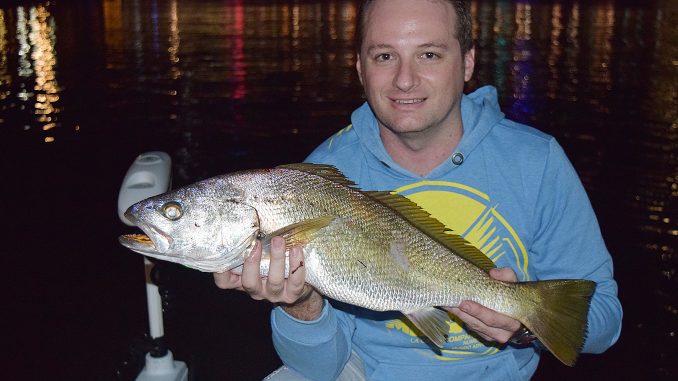
by Bob Thornton •
When most anglers think of mulloway, what usually comes to mind is a deep schooling fish, often relating to structure and using the slack tide to feed. What I’m about to tell you goes against most traditional mulloway luring techniques.
It’s no secret that mulloway will feed up high in the water column during a good run of fresh down a river, capitalising on the copious amounts of bait being swept down in the murky surge. Indeed, anglers have known for years that this is a great time to pick a spot along breakwalls at river mouths and throw shallow-diving or even surface presentations to these fired-up silver slabs. The same can occur in a stiff swell around oceanic rocks.
As fantastic as this fishing can be, it’s often short-lived, and the weather events that spur this kind of action can be few and far between. Furthermore, this kind of fishing isn’t known to happen in every system that harbours mulloway.
In some areas, mulloway feed high in the water column and up shallow without the aid of infrequent weather events, but there are a few things to understand before taking on this caper. Let me tell you what I’ve learned in my local waters in South East Queensland.
The ingredients
There are certain ingredients you need if you’re going to look for mulloway feeding near the surface. The first and foremost for me is that it has to be dark, and I find all my shallow and topwater mulloway have come at night time, or in the very wee hours of the morning.
The second is something that aggregates bait, which may take the form of mullet, herring, prawns, garfish and so on. Small fish and crustaceans are often attracted to light pools on the water at night, and these can be found around pontoons, bridges, walkways, restaurants, moored boats, and so on. Other things that aggregate bait might be a hot water outlet, creek mouth or culvert.
The third is current. I’ve noticed that bait will hang around light pools when there is no current, but quite often they’re not being eaten. I have a theory that without current, there is no sense of urgency in the mulloway’s mind. Add some current to that however, and that mindset quickly changes.
Now the bait is moving past – often quite quickly – and the mulloway has to make a decision, and this is when you can witness some fantastic boofing action. Bait will try to hold themselves under the light, but most of the time the current gradually pushes them through the beam of light and out of sight. It seems that no current is too strong, and most of the time, I won’t even make a cast until I can see some movement in the water.
Most urbanised systems in NSW and South East Queensland will have lighted areas along their course, whether the light comes from a bridge, a pontoon or a moored boat, and it’s here that you want to begin your search.
Little hints
There are a few extra ingredients, which aren’t always necessary, but they can accelerate your search. Certainly, if you find any of the following things in your local water, focus your attention toward them!
When looking for light, the most common we see is orange or white – the sort you see lighting our streets at night. Fishing around orange and white light has put me onto plenty of fish, but I will always favour blue light if I can find it. Blue light has a shorter wavelength than orange or white, and will penetrate further into water. Does more light mean more bait? Absolutely!
Another handy extra is structure. When the current is ripping past, it can be tiring work for a mulloway if it has to hold itself in the current for the whole tidal phase. Anything that obstructs the current, be it a bridge pylon, moored boat or pontoon, will act as a resting station for the mulloway between mouthfuls of bait. Both behind and in front of anything blocking the current there is often slack water, and I’ve found dominant predators like mulloway like to sit in front of structure so they can get at the bait moving through first.
Something that aids mulloway when hunting around lighted areas is shadows. In most light pools, and particularly around bridges, there will often be shadows, where the light is blocked out by something overhead. In this scenario, mulloway will often sit in these shadows, using them as an ambush, and dash out when something enters the light pool. Bridges almost always have shadows, where the bridge structure itself prevents part of the light from reaching the water, creating one of these light lines.
Presentations
When you’ve found an area where you know mulloway are feeding, quite often it doesn’t matter too much what you throw at them. So long as it gets in the zone, it should get eaten. When the bait is very specific, it can pay to match the hatch, and my preferred baits range from small flies around 3cm long to big, hard swimbaits around 180mm! It pays to look in the water to see what’s swimming around.
When I go out chasing mulloway at night I carry a range of jerkbaits, crankbaits, topwater presentations, swimbaits and soft plastics in varying sizes. If the action is a bit slow, vibes and plastics fished deep will also work in these same areas if the fish are down deeper.
Perhaps the best thing about this style of fishing is it allows fly anglers a decent shot at mulloway, a fish that is seldom targeted in this way. And believe me, they love flies! Anything resembling the bait in the area will work. I started off by using flies tied for barramundi, but these days I catch most of my flyfish on home-tied herring patterns, around 5-10cm long, tied on Gamakatsu SL12s hooks in size 2/0 or 3/0.
By-catch
When fishing for mulloway at night, which are there to capitalise on the abundant bait attracted to one area, it’s no surprise that other predators often get in on the action as well. The by-catch can be as impressive as the mulloway themselves, and can be different up and down the coast!
Where I fish in South East Queensland, our usual by-catch consists of king threadfin, flathead, rogue bream, tailor, estuary cod, and even the odd barramundi and bull shark. Further down the coast, you can expect some of the above species, along with trevally, estuary perch and snapper.
Anything that comes and grabs a lure intended for mulloway is good fun in my books, and the by-catch is just another reason I enjoy this style of fishing.
Creepin’ while you’re sleepin’
The only way to know if there are places like this in your local area is to get out of a night and start looking! You never know if you never go! While this is a bit of a cliché, it’s how I got started in this caper and I know I’m not alone. A few hints here and there got me thinking about some urban waters close to home, and within weeks I was hooked.

